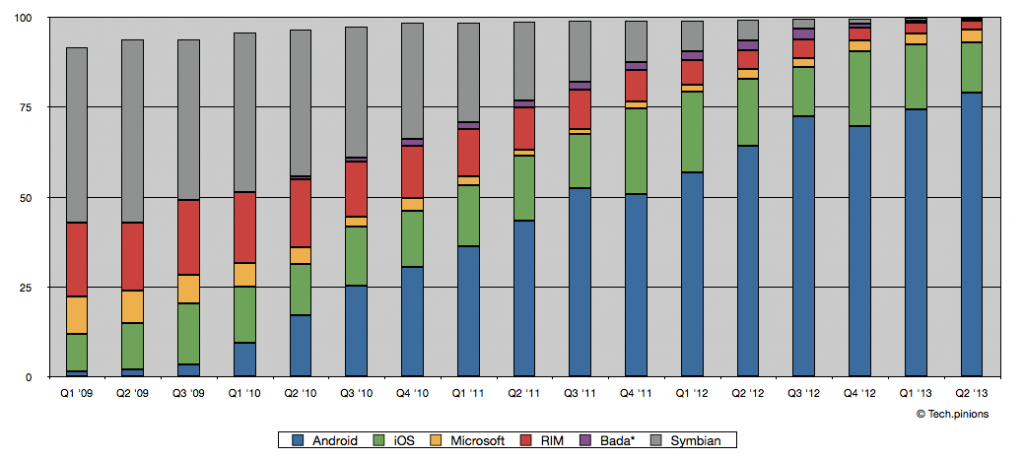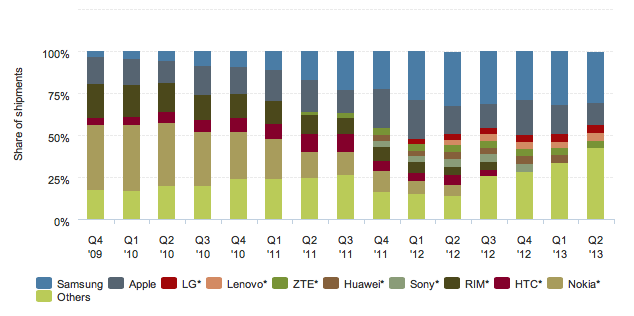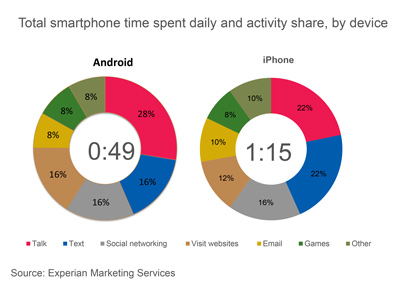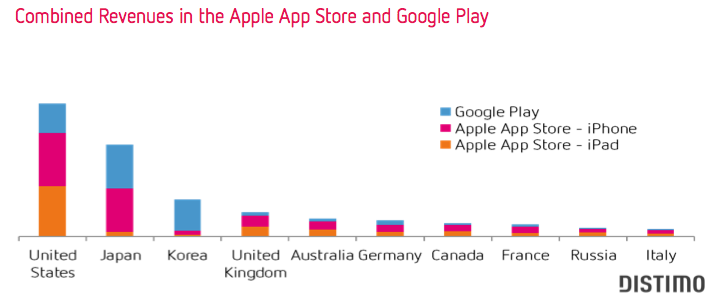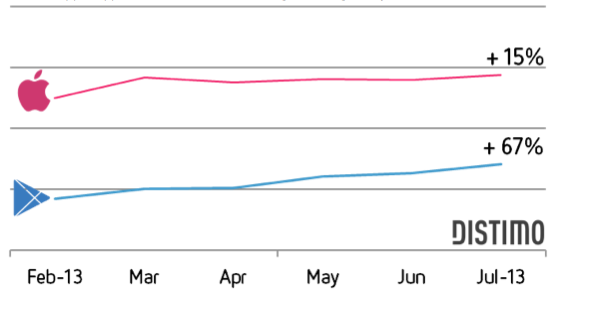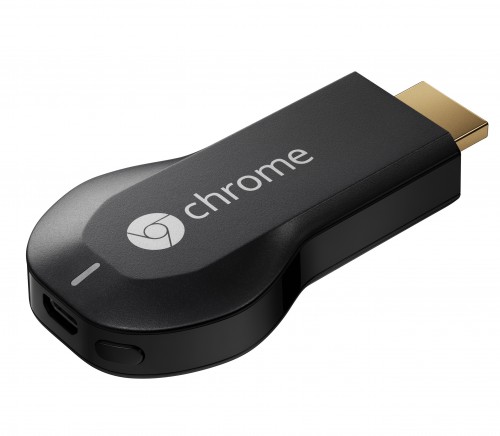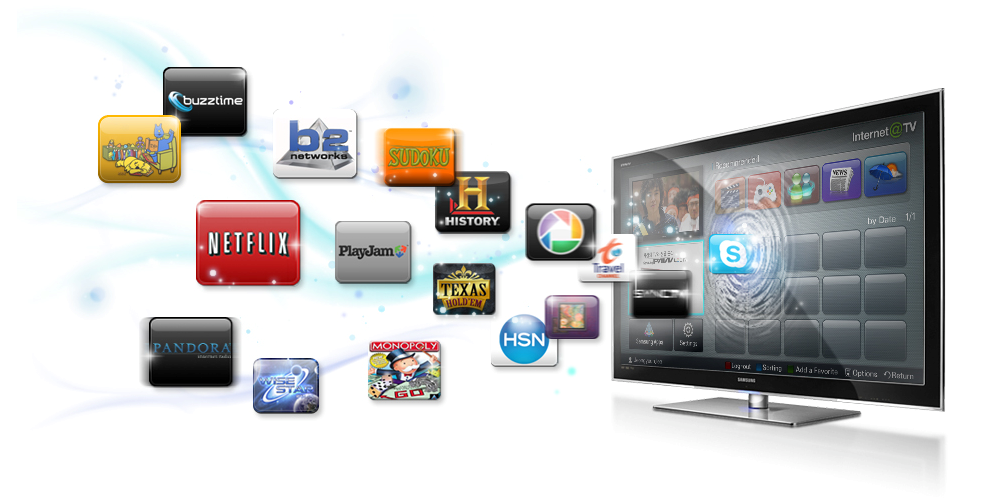I have been connecting compute devices to my TVs for nearly 20 years, the first being a Compaq Presario hooked to a massive RCA 35” tube TV via an NTSC converter. Back then, there wasn’t online audio or video content worth streaming, but there were games like “You Don’t Know Jack” that were a lot of fun. My, how times have changed. I now have three Apple TV’s and an Intel-based WiDi base station connected and also a few retired Google TVs that currently sit in boxes. I just picked up a Chromecast, and after using it for a week, I wanted to share my thoughts and impressions, and out of those, see what insights I found. One thing in particular I have a lot of questions about is exactly what Google is trying to do strategically. Let’s start with the product.
My first impression after I opened the package was just how small it was. It’s really small, thinner than my Kingston 32GB USB3 stick, but wider at the end. I was thinking, “What a great thing to travel with”, or that I could move it from room to room between my 4 HDTVs. It appears at the outset that Google is trying to “one-up” Apple as it relates to size. I do need to point out a few things, though.
What the pictures never show is that Chromecast requires USB power, either from the TV or from a charger. I first thought that it supported the MHL standard where HDMI is powered, but it doesn’t. While Apple TV beauty shots never show power cords it still bugged me because the expectation is that Chromecast is drawing power from the port.
Let’s talk setup. It’s really easy. You just plug the Chromecast into the HDMI port, plug it into your TVs USB port and the hardware is setup. WiFi setup is a lot easier than any other connected TV device as there’s no painful pass-code entry with a T-bar remote like on the Apple TV. With Chromecast, you download the Chromecast Android app, Wi-Fi connect to your phone, enter the pass-code on your phone, it hands off to Chromecast to your router, and you’re connected.
One other thing I need to point out is Chromecast’s visual style points. There’s never a black screen when it’s connected. What you see are stylish, full screens of nature and cityscapes. So Apple-esque….
One potential setup issue will occur wherever there is a logon screen to connect. Like An Xbox or Apple TV, there is no way to sign into a hotel or work WiFi screen to put in a special access code. That’s disappointing, especially if you wanted to use it while traveling. This limits Chromecast’s utility a bit and somewhat defeats the purpose and value of its small size.
Let me move to content.
Chromecast currently supports Android app-based YouTube, Google Music, Google Play TVs & Music, and PC and Mac Google Chrome browser content. I watched four movies via Android Google Play and the experience, on the whole, was good. The video and audio was high quality. My only complaint was fast forwarding and rewinding. If you miss something and want to go forward or back a few minutes with any degree of precision, it’s really difficult. I attribute this to WiFi latency. Someday, the industry need to get with the WiFi direct program and remove the router from this usage model equation, but not now in this case. Android Google Music and Android YouTube worked well, too.
The PC/Mac Google Chrome mirroring experience, albeit in Beta, worked really well for me. There is a lot of noticeable latency, much more than Airplay, but for most music, movies, video, and even doing a slide presentation, it will be just fine. There are three of classes of content on the Chrome browser: 1) those that use Google’s API and have a seamless and full screen experience, 2) those that you must set manually to full screen and, 3) those that don’t run video at all. YouTube and Netflix use the Chromecast API. Super Pass, Hulu and Vimeo don’t use the API, but work just fine. Finally, Amazon and Time Warner Cable, probably because they use Silverlight, won’t play any video.
One thing that I find most interesting is to think what Google may do down the road with Chromecast. I find it interesting they used 3D graphics from Vivante. 3D graphics sure make menuing and overlays nice, but why add the same Vivante GC1000 graphics that’s inside the Samsung Galaxy Tab 3? Theoretically, this could run OpenGL ES 3.0 games, and the user could use their smartphone as the controller.
All in all, Chromecast is Android’s impression of the Apple TV. It follows the Android philosophy- it costs a lot less, doesn’t do as much but does enough, and the experience isn’t as smoothe (in this case driven by WiFi latency). This equation has worked well for many players in the Android ecosystem, and I expect Chromecast to sell well, certainly better than the failed Google TV attempts.
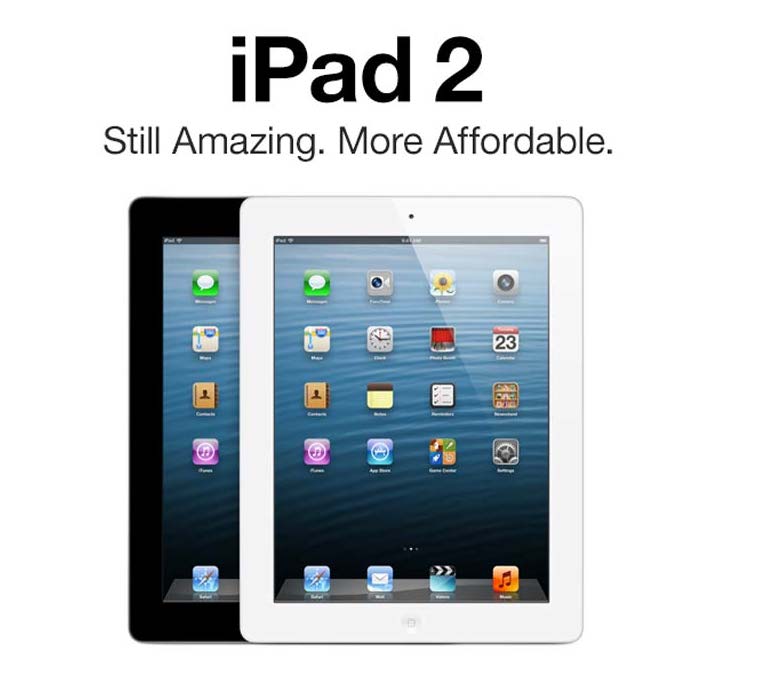

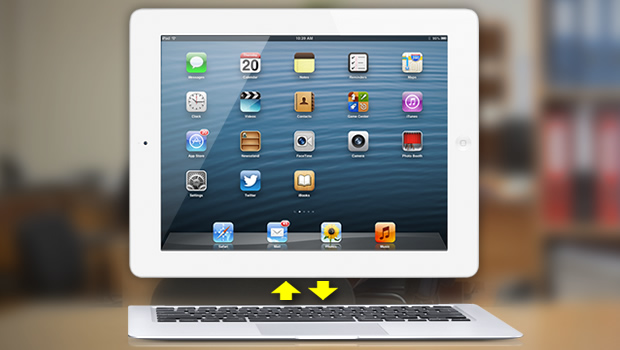



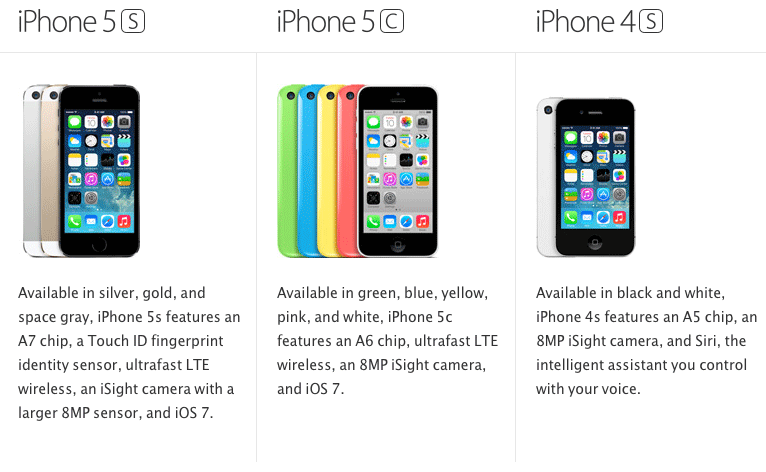
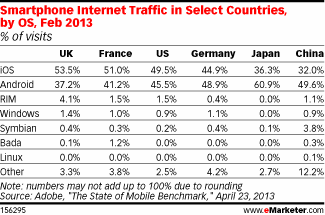
![The Myth of an iPhone Killer [Updated with added chart]](https://techpinions.com/wp-content/uploads/2013/08/Fotolia_53841875_Subscription_Monthly_M.jpg)

